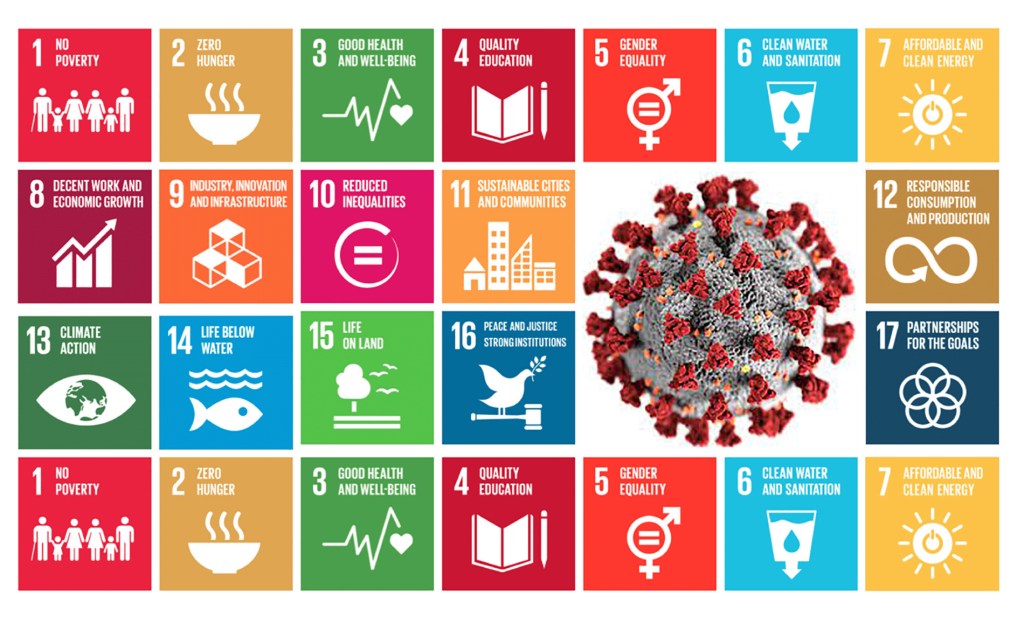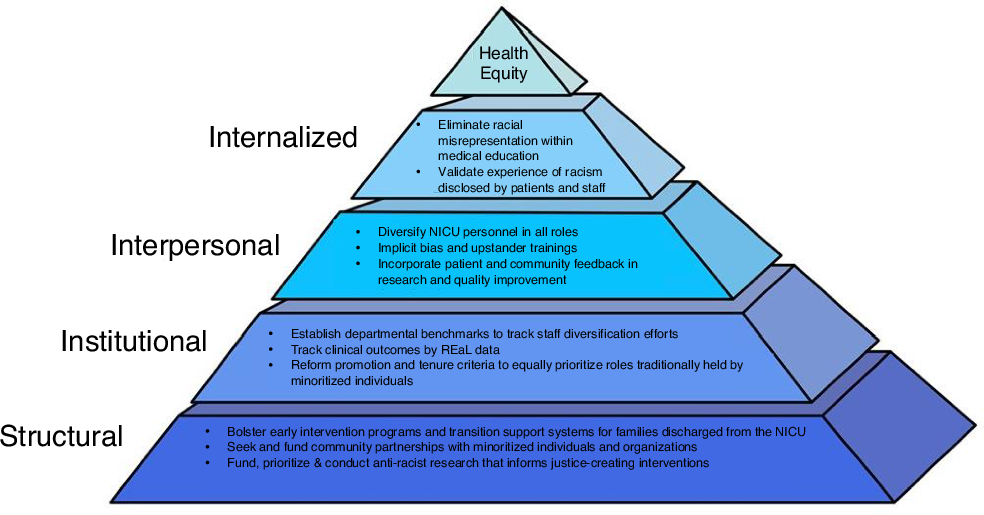How a VCU expert’s anti-ageism message resonated in a Connecticut town – VCU News

Community Initiative Addresses Age-Based Inequality in Alignment with Sustainable Development Goals
Introduction: A Partnership for Inclusive Communities (SDG 11, SDG 17)
A recent community-wide initiative in Newtown, Connecticut, titled “Timeless Newtown: Embracing Every Generation,” serves as a best-practice model for achieving Sustainable Development Goal 11 (Sustainable Cities and Communities) by fostering inclusivity for all age groups. The program, centered on the book “Ageism Unmasked: Exploring Age Bias and How to End It” by Dr. Tracey Gendron, exemplifies SDG 17 (Partnerships for the Goals) through its successful collaboration between the community organization Friends of Newtown Seniors, local government officials, and academic expertise from Virginia Commonwealth University (VCU).
Core Objective: Reducing Inequalities and Promoting Well-being (SDG 3, SDG 10)
The primary objective of the initiative was to directly confront ageism, a significant barrier to achieving SDG 10 (Reduced Inequalities). By distributing 1,000 copies of Dr. Gendron’s book, the town facilitated a public dialogue aimed at dismantling negative stereotypes associated with aging. This effort contributes directly to SDG 3 (Good Health and Well-being) by addressing the detrimental effects of age bias on the mental and physical health of individuals throughout their life course. The program culminated in a visit by Dr. Gendron on September 18, where she engaged with the community to discuss the realities of age bias.
Key Themes and Analysis
Dr. Gendron’s presentation highlighted several critical areas where societal views on aging must evolve to create more equitable and healthy communities.
Challenging Systemic Ageism for Health and Economic Inclusion (SDG 3, SDG 8, SDG 10)
- Reframing Aging: The importance of embracing one’s age was emphasized as a method to reframe internal and external dialogues from negative to positive, thereby promoting mental well-being in line with SDG 3.
- Deconstructing Generational Labels: The use of labels such as “baby boomers” or “Gen X” was identified as a form of ageism that perpetuates stereotypes and undermines SDG 8 (Decent Work and Economic Growth) by incorrectly suggesting that birthdate predicts ability or value in the workforce.
- Critiquing the Anti-Aging Market: The anti-aging industry was analyzed for its role in reinforcing the stigma of physical aging, which can negatively impact self-worth and mental health, counteracting the principles of SDG 3.
- Redefining Value Beyond Employment: The initiative addressed the loss of identity many feel upon retirement, a challenge to social inclusion and well-being. By promoting value and contribution at all life stages, communities can better support the goals of SDG 10.
Institutional Commitment and Future Recommendations (SDG 11, SDG 16)
The “Timeless Newtown” program demonstrates a powerful commitment to building inclusive institutions, a core target of SDG 16 (Peace, Justice, and Strong Institutions). This was formalized by a governor’s proclamation officially recognizing the town’s efforts to address ageism. This model, along with VCU’s status as an Age-Friendly University, provides a clear framework for developing age-inclusive environments as envisioned by SDG 11.
Actionable Recommendations for Replication:
- Establish multi-sector partnerships between community organizations, academic institutions, and local governments to address age-based inequality (SDG 17).
- Launch educational campaigns, such as community-wide reading programs, to raise public awareness and foster dialogue on the pervasive nature of ageism (SDG 10).
- Secure formal institutional commitments, including official policies and proclamations, to create a foundation for lasting change and build inclusive institutions for all ages (SDG 16).
Analysis of Sustainable Development Goals in the Article
1. Which SDGs are addressed or connected to the issues highlighted in the article?
-
SDG 3: Good Health and Well-being
- The article addresses the mental and psychological well-being of the aging population. It discusses how ageism and negative stereotypes about aging can make older individuals feel “no longer valued,” impacting their sense of self-worth. The initiative promotes a positive reframing of age-related discussions and embracing age, which contributes to overall well-being.
-
SDG 4: Quality Education
- The core of the article is a community-wide educational initiative, “Timeless Newtown,” which used Tracey Gendron’s book “Ageism Unmasked” as a shared text. This program, similar to VCU’s Common Book initiative, aims to educate the public, raise awareness about age bias, and foster lifelong learning and discussion about social issues. VCU’s designation as an “Age-Friendly University” and its master’s program in gerontology further highlight the connection to education.
-
SDG 10: Reduced Inequalities
- The central theme of the article is the fight against ageism, which is a form of inequality based on age. The “Timeless Newtown” program is a direct effort to combat “negative stereotypes about aging” and “age bias.” The article advocates for the social inclusion of all people, regardless of their age, by challenging generational labels and promoting a more equitable view of aging.
-
SDG 11: Sustainable Cities and Communities
- The article showcases a community-level action in Newtown, Connecticut, to create a more inclusive environment for all generations. The “Timeless Newtown: Embracing Every Generation” initiative is presented as a “best practice” for other towns to follow, demonstrating a model for building inclusive and age-friendly communities where all residents feel valued and can participate fully.
2. What specific targets under those SDGs can be identified based on the article’s content?
-
Target 3.4: By 2030, reduce by one third premature mortality from non-communicable diseases through prevention and treatment and promote mental health and well-being.
- The article connects directly to the “promote mental health and well-being” aspect of this target. By tackling the psychological harm of ageism—such as the feeling of being “untethered” or “no longer valued” after retirement—the initiative aims to improve the mental well-being of older adults.
-
Target 4.7: By 2030, ensure that all learners acquire the knowledge and skills needed to promote sustainable development, including…promotion of a culture of peace and non-violence, global citizenship and appreciation of cultural diversity…
- The townwide reading and discussion of “Ageism Unmasked” is an educational effort to help citizens acquire knowledge and skills to combat age bias. This promotes an appreciation for diversity across age groups and fosters a more inclusive and sustainable social culture.
-
Target 10.2: By 2030, empower and promote the social, economic and political inclusion of all, irrespective of age…
- This target is at the heart of the article. The entire “Timeless Newtown” initiative is designed to fight ageism and promote the social inclusion of older people, ensuring they are valued members of the community. The book’s message to end age bias directly supports this goal.
-
Target 10.3: Ensure equal opportunity and reduce inequalities of outcome, including by eliminating discriminatory…practices and promoting appropriate…action in this regard.
- The community program described is an “appropriate action” aimed at eliminating the discriminatory practice of ageism. The article highlights this initiative as a “first step to acknowledging that ageism is something that we can change,” directly aligning with the call to action in this target.
3. Are there any indicators mentioned or implied in the article that can be used to measure progress towards the identified targets?
-
Community-level initiatives and policies:
- An indicator for progress towards targets 10.2 and 10.3 is the establishment of community programs aimed at reducing discrimination. The article explicitly mentions the “Timeless Newtown” initiative as a “best practice” and notes that the “governor sign[ed] off on it” with a “proclamation that this town is going to be addressing ageism.” The number of such programs and official proclamations can serve as a measurable indicator.
-
Distribution of educational materials:
- Related to Target 4.7, a specific indicator mentioned is the number of educational materials distributed to the public. The article states that Newtown officials worked to “order and distribute 1,000 copies” of the book “Ageism Unmasked” through local libraries.
-
Public engagement and participation:
- Progress can be measured by the level of public engagement. The article implies this through its description of “subsequent events and discussion groups tied to different chapters of the book,” Gendron’s Q&A sessions, and her presentation at the town hall. The “more than 80,000 online views” of her TEDx Talk is another quantifiable indicator of public interest and engagement with the topic of ageism.
SDGs, Targets, and Indicators Table
| SDGs | Targets | Indicators |
|---|---|---|
| SDG 3: Good Health and Well-being | 3.4: Promote mental health and well-being. | Implied: Initiatives designed to combat negative self-perception and feelings of being “no longer valued” among older adults. |
| SDG 4: Quality Education | 4.7: Ensure all learners acquire knowledge and skills to promote appreciation of cultural diversity. | – Number of educational materials distributed (e.g., 1,000 copies of “Ageism Unmasked”). – Number of community-wide educational programs and discussion groups established. |
| SDG 10: Reduced Inequalities | 10.2: Empower and promote the social inclusion of all, irrespective of age.
10.3: Eliminate discriminatory practices and promote appropriate action. |
– Number of community-led initiatives fighting age-based discrimination (e.g., the “Timeless Newtown” program). – Number of official policies or proclamations addressing ageism (e.g., the governor’s proclamation). |
| SDG 11: Sustainable Cities and Communities | (Implied connection to creating inclusive communities) | – Number of towns/cities adopting “Age-Friendly” or similar initiatives, with the Newtown program cited as a “best practice.” |
Source: vcuhealth.org

What is Your Reaction?
 Like
0
Like
0
 Dislike
0
Dislike
0
 Love
0
Love
0
 Funny
0
Funny
0
 Angry
0
Angry
0
 Sad
0
Sad
0
 Wow
0
Wow
0
















































/environment-climate-change-and-health-(ech)/water-sanitation-hygiene-and-health-(wsh)/landfill-tuvalu-36092.tmb-1200v.jpg?sfvrsn=5c21fe40_1#)

.jpg.webp?itok=0ZsAnae9#)


























